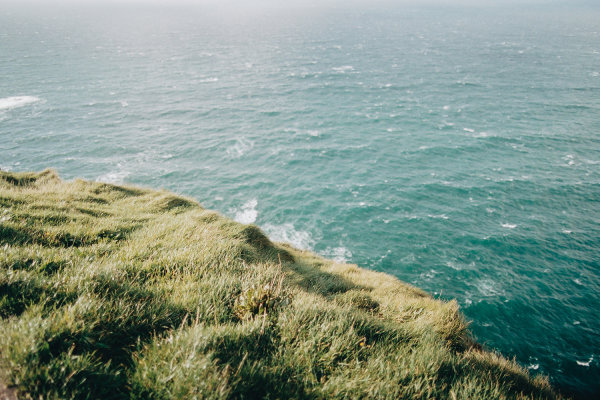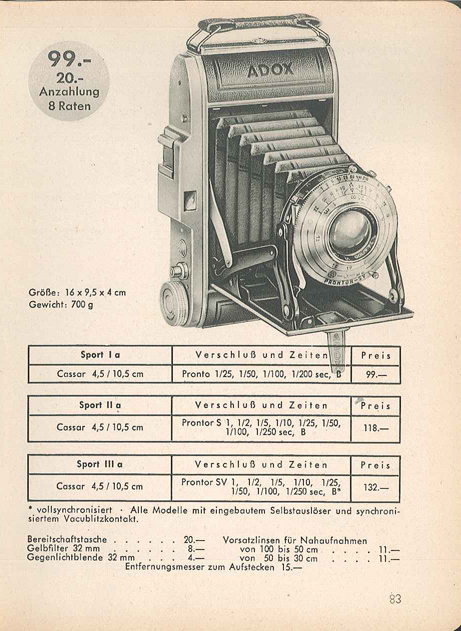
Key Takeaways
-
Folding cameras offer unparalleled portability, allowing you to easily carry a medium format camera in your pocket.
-
Their design provides a large image area on the film, which results in superior image quality with fine detail and low grain.
-
Using a folding camera comes with a unique aesthetic and mechanical simplicity that appeals to vintage enthusiasts and purists.
-
However, one must be mindful of the slower operational pace and the potential for light leaks due to aging bellows.
-
For those willing to embrace their quirks, folding cameras can provide a rewarding and distinctive photographic experience.
My beginners journey
Key Considerations
|
Pro’s |
Con’s |
|---|---|
After time you will need to fix light leaks | |
|
Sharp photos |
You need some time to learn how to correctly adjust the settings |
Can shoot medium format film |
Demand’s patience |
|
Don’t rely on batteries | |
|
Can last a lifetime |
Mechanical parts may require cleaning and lubrication |
|
Allows for a larger area -shooting landscapes | No photo lab’s are talking photos out in old way, they scan and print so authenticity is gone |
|
Manual aperture setting |
You get fewer shots per roll |
|
Easy to find someone skilled in repairing these vintage pieces |
Not many photo-labs can take out 120 developed films |
120 Film roll is easy to find | |
|
Easy to develop your self (complete beginner talking) |
Benefits of Folding Cameras
One of the biggest draws of folding cameras is their portability. Despite their ability to shoot medium format film, these cameras fold down to a size that’s incredibly travel-friendly. You can easily take them on trips without the need for a bulky camera bag.
Medium Format Quality
The size of the film is crucial in photography because it directly influences the quality of your images. Folding cameras typically use 120 or 620 film, providing a larger area to capture light compared to 35mm. This translates to images with more detail, less grain, and a richer tonal range. The result? Each photograph you take has the potential to be a work of art.

The Aesthetic Appeal
There’s something about the look and feel of a folding camera that modern devices can’t replicate. The tactile experience of unfolding the bellows, the sound of the shutter release, and the physical interaction with the focus and aperture settings make you an active participant in the creation of each image. This hands-on approach can make the photography experience more intimate and rewarding.
The Durability of Simplicity
Folding cameras are mechanical marvels. They don’t rely on batteries or electronics, which means there’s less that can go wrong. With proper care, these cameras can last a lifetime. Their mechanical nature also forces you to slow down and consider each shot carefully, which can lead to more thoughtful and intentional photography.
Drawbacks of Folding Cameras
While folding cameras have their allure, they come with certain limitations. It’s important to be aware of these so you can mitigate them and continue enjoying the unique experience these cameras provide.
Folding cameras hark back to a time when photography was a slower, more deliberate process. They demand patience and skill, which can be a steep learning curve for those used to the immediacy of digital cameras. You have to manually adjust the focus, aperture, and shutter speed – there’s no ‘auto’ mode to fall back on. This might mean missing a shot or two while you’re getting the hang of it, but it also means that when you get that perfect shot, it’s all the more satisfying.
Additionally, the pace at which you can take consecutive shots is slower. There’s no rapid-fire shooting here; each image must be carefully composed and considered. This can be a disadvantage in fast-moving situations, but it also encourages you to make each frame count.
Challenges of Upkeep
These cameras are often decades old, and their age can show. The bellows may be prone to pinholes and tears, which can cause light leaks, and the mechanical parts may require cleaning and lubrication. Regular maintenance is key to keeping a folding camera in working order. It’s still easy to find someone skilled in repairing these vintage pieces.
Film Format Limitations
One of the charms of folding cameras is their use of medium format film, which is larger than the standard 35mm film. This means better image quality, but it also means that the film is more expensive, but it is still easy to find. Plus, you get fewer shots per roll – typically 12 or 16, compared to 36 on a roll of 35mm film. This can add to the cost and requires you to be more selective with each shot you take.
Moreover, not all labs develop medium format film, so you may need to send it away for processing or develop it yourself, which adds another layer to the learning curve and the overall experience. No photo lab’s are talking photos out in old way, they scan and print so authenticity is gone.
Folding Cameras vs. Modern Tech
It’s undeniable that modern photography technology offers convenience and immediacy that vintage cameras cannot match. Yet, folding cameras offer a different kind of value – one that’s measured in the tactile joy of photography and the exceptional image quality of medium format film.
In today’s world of high-resolution digital cameras and smartphones, it might seem counterintuitive to choose a folding camera. But photography isn’t just about the latest technology; it’s about the experience and the results. Folding cameras force you to slow down, think about your composition, exposure, and to truly connect with the scene in front of you. This often leads to more meaningful and carefully crafted images.
Moreover, the physicality of film photography – loading the film, advancing it manually, and the anticipation of waiting for your photos to be developed – adds an element of surprise and excitement that digital photography often lacks.
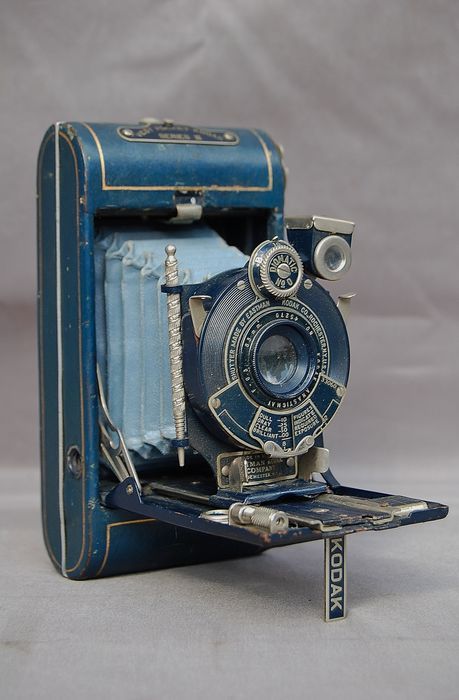
Sensor vs. Film: A Medium Format Debate
The debate between film and digital sensors is as old as digital photography itself. While sensors continue to improve, there’s a quality to film – a depth, a warmth, a character – that many feel digital still can’t replicate. And when it comes to medium format film, with its larger size and resolution, that quality is even more pronounced. Folding cameras, with their medium format film, offer a sense of clarity and detail that is difficult to achieve with smaller digital sensors.
The Lomography Touch
Within the folds of these classic cameras lies the heart of Lomography – a style of photography that celebrates the unpredictable and imperfect. Light leaks, vignettes, and soft focus that might be considered flaws in a digital photograph become part of the charm with folding cameras. This embrace of the unexpected encourages photographers to let go of perfection and revel in the unique results that come from shooting with a piece of history.
Lomography is about the joy of seeing the world through a different lens – quite literally. It’s about the anticipation of not knowing exactly how your shot will turn out until you’ve developed your film. It’s about the beauty in imperfection and the stories that each photograph tells.
The Folding Cameras
Folding cameras, with their quirks and characteristics, are not for everyone. But for those who are drawn to the tactile feel of film, the deliberate pace of manual photography, and the outstanding image quality of medium format, they are a treasure. They remind us that photography is not just about capturing an image, but about the experience of creating something beautiful. Whether you’re a seasoned photographer or just starting out, the journey of using a folding camera can be as rewarding as the stunning images you’ll create.
Why Choose a Folding Camera
If you’re considering adding a folding camera to your photographic toolkit: Choose a folding camera if you’re ready to embrace a slower, more thoughtful approach to photography, if you’re willing to learn and overcome the technical challenges, and most importantly, if you’re excited by the prospect of creating images with a depth and quality that only medium format film can offer.
My beginners journey
As a beginner, I initially lacked knowledge about the optimal camera settings for capturing the best shots. My first experience with a film roll was essentially an experiment, relying on intuition. Surprisingly, upon developing the roll, I found that most of the photos turned out better than expected. This highlighted the forgiving nature of cameras, particularly when using Black & White film.
To enhance my learning process, I meticulously recorded the settings used for each photo, allowing for a detailed analysis post-development. I had a great opportunity to study every shot.
Despite feeling anxious about developing the film for the first time, I dedicated time to watching instructional videos on platforms like YouTube. Following my preferred tutorial, I successfully processed my initial batch of film.
I watched this video <—
Upon visiting a photo lab to retrieve physical copies of my photos, I was surprised to learn that traditional darkroom methods have been replaced by modern scanning and printing techniques. You might be disappointed to hear that the authenticity is no longer available, so it is a great opportunity to set up your own darkroom.
You can see my very first beginner photos right here

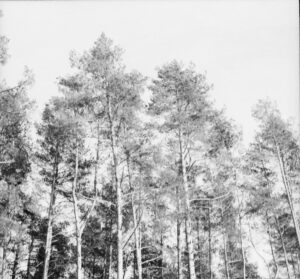
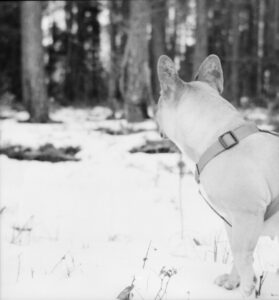
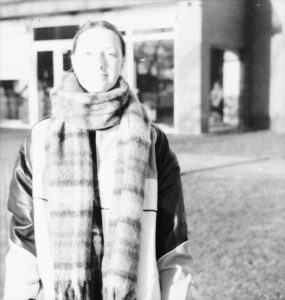


Frequently Asked Questions (FAQ)
What Are the Best Film Types for Folding Cameras?
Folding cameras typically use 120 or 620 film, known for its medium format size and quality. The best film type for you depends on the look you’re going for. Color negative film is versatile and forgiving, making it a great choice for beginners. Black and white film offers a classic, timeless feel and can be developed at home. Slide film can provide vibrant colors and high contrast, but it requires precise exposure. Experiment with different types to discover your favorite.
It’s also important to note that while 120 film is widely available, 620 film is less common, but you can still find it with a bit of searching. Some folding cameras can be modified to accept 120 film, which can be a practical solution.
How Do I Prevent Light Leaks in a Folding Camera?
To prevent light leaks, start by examining the bellows in a bright light to look for pinholes or tears. If you find any, you can patch them up with a bit of black fabric tape or liquid electrical tape. Make sure to handle the bellows gently to avoid creating new leaks. When not in use, store your camera in a dry, dark place to protect the bellows from further damage.
If the bellows are severely damaged, it may be worth getting them professionally replaced. This can be a worthwhile investment to ensure your camera continues to function properly and produce clean images.
Can Folding Cameras be Used by Beginners?
Yes, folding cameras can be used by beginners, but there’s a learning curve. Start by familiarizing yourself with the camera’s functions and practice loading film. Take your time with each shot to understand how aperture, shutter speed, and focus work together. Don’t be discouraged by mistakes; they’re all part of the learning process. Many find that starting with a folding camera deepens their understanding of photography fundamentals.
For beginners, it might also be helpful to use a light meter app on your smartphone to assist with exposure settings until you get the hang of it.
Are There Any Modern Folding Cameras Available?
While most folding cameras are vintage, there are a few modern iterations and replicas available. These cameras blend the classic design of folding cameras with some modern conveniences, such as light meters and more durable materials. If you’re interested in the folding camera experience but want something newer, these might be worth exploring.
Keep in mind that modern folding cameras can be quite expensive due to their niche market and the craftsmanship involved in their production.
How Do I Clean and Maintain My Folding Camera?
To clean and maintain your folding camera, start with the lens and viewfinder using a soft lens brush or cloth. Avoid using liquid cleaners that can seep into the camera and damage it. For the body, a dry or slightly damp cloth should suffice. Regularly check the bellows for light leaks and the mechanical parts for smooth operation.
If you’re comfortable with it, you can learn to take apart and clean the shutter mechanism and other internal parts, but this should be done with caution. For more thorough maintenance, consider taking your camera to a professional who specializes in vintage camera repair.
